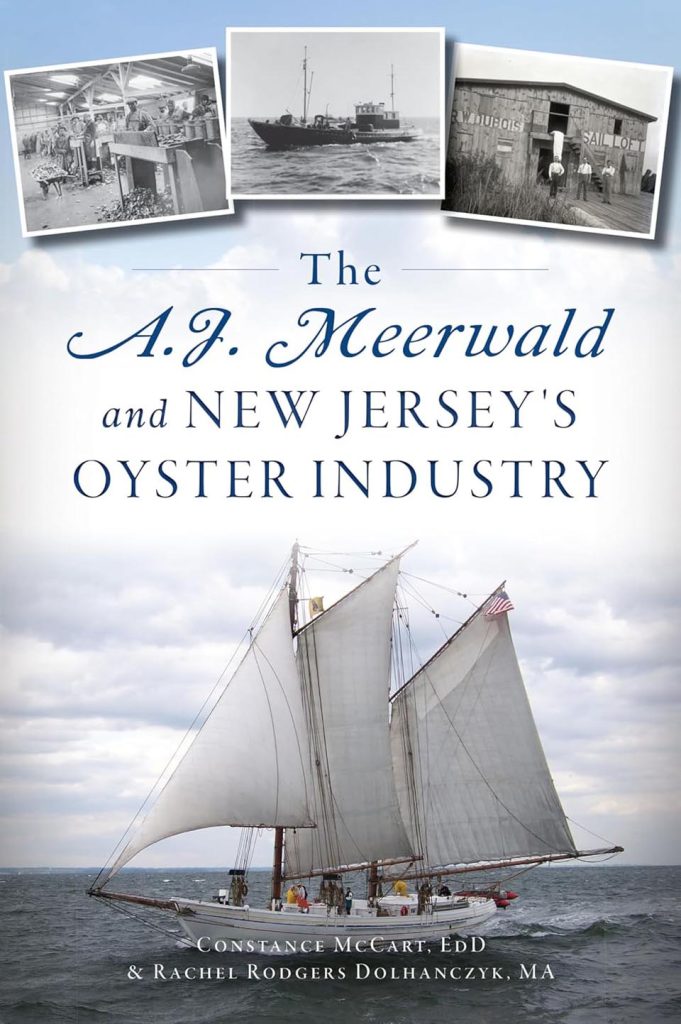A Tall Ship
Excerpt from a book penned by local author(s).

While the oyster industry was at its peak in the late 1920s, with plentiful spat indicating good harvests to come, the coming of the Great Depression in 1929 meant financial difficulties for some, and especially for Gus and Bill Meerwald. The industry was hit in the ’30s by the poor economy during the Great Depression, by overfishing, pollution and by the growth of the population in the area creating run-off and muddying the waters to an extent that even the oysters could not cope. The entire oyster industry was seriously affected by the depression with the value of production dropping from over $3 million in 1929 to as little as $500,000 in 1939. The Meerwald family lost their boat to bankruptcy as did others, and the impact of the financial crisis extended of course to the businesses dependent on the industry such as the shipbuilding, chandlers and the local stores and eateries. Additional damage occurred in 1938 when a notable hurricane struck the area of the oyster beds.
In the case of the Meerwald, the boat appears to have been used mainly through 1933, and spent a great deal of time simply moored in the river at Dennis Creek. By 1935, her financial troubles were evident. The U. S. Marshal sold the A.J. Meerwald at auction to repay creditors including Gus and Bill’s younger brothers, Francis and Edward, who had worked on the boat with them. In the suit, Francis claimed an amount due of $7,220 while Edward asked for $3,935 on July 31, 1935. The amount actually awarded to the two came to only $1,343.86 in 1930s dollars. The schooner was purchased by the Texas-Pacific Realty Company, controlled by Benjamin Cohen, who put up $700 of purchase money, and a balance of $800 was paid to Cohen by Francis Meerwald.
The wives, Edna and Bill’s wife Florence, wound up purchasing the boat back at auction with financing from their parents. On October 4, 1935, Cohen sold the schooner to Florence and Edna for the sum of $1,700—200 in cash and 800 by a note from Francis and Edward—and the remaining $700 was mortgaged. At this point, Gus and Edna lost their home in Millville and moved to South Dennis, with her parents again throwing the lifeline by purchasing a home for them.
In the meantime, the brothers gave up the seafaring life. Gus became an egg and poultry farmer, while Bill became a well-known Justice of the Peace and then Magistrate for 35 years in Goshen. The boat itself lay inactive, tied up at Dennis Creek, having spent just a few short years oystering.
In 1942, the boat was commandeered by the United States Government. World War II made for a shortage of boats for the government, and it was a practice to offer reimbursement to owners for the use of a ship in the war effort under the Small Craft Requisition Authorization #115 of the War Shipping Administration. On June 1 of 1942, an appraised value was set by the Director of Small Vessel Procurement of $12, 498.
She was stripped of her masts and turned into a fire boat supporting ships loading munitions in the Philadelphia port. The ship was sold to the U.S. Coast Guard as USCG -86001 and used in the Philadelphia port until 1946. Two other local schooners were also requisitioned—the Kathryn & Elma and the Emma & Ruth. But even this “solution” would prove to have a downside. n
The A.J. Meerwald and New Jersey’s Oyster Industry, by Constance McCart, EdD. and Rachel Rodgers Dolhanczak, MA, can be purchased at bayshorecenter.org/shop









